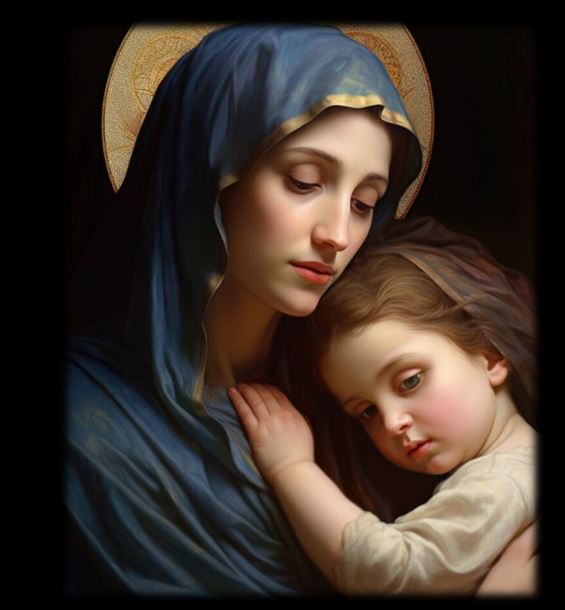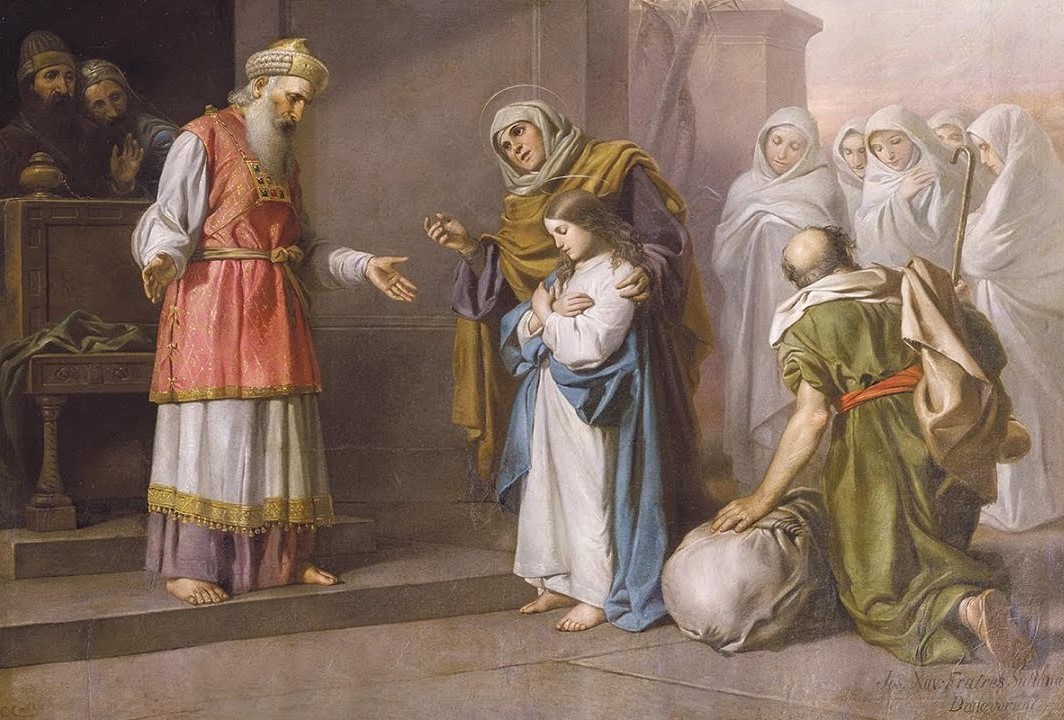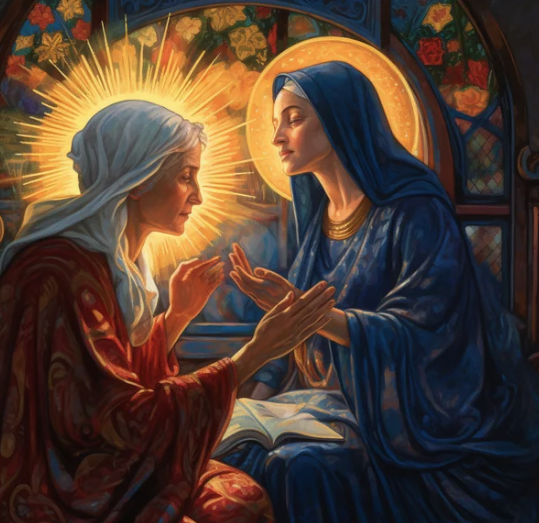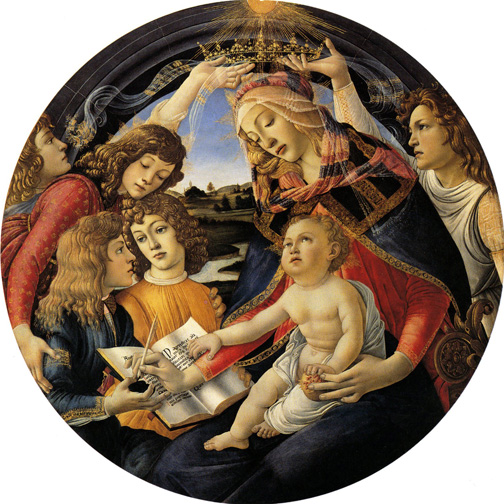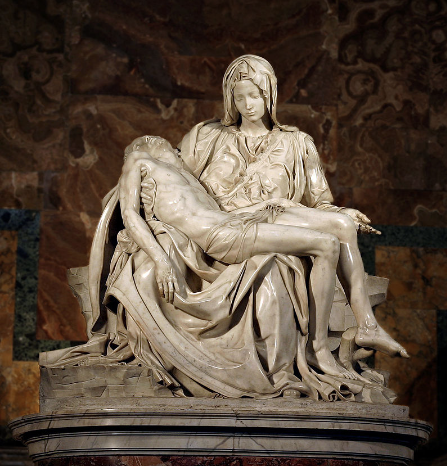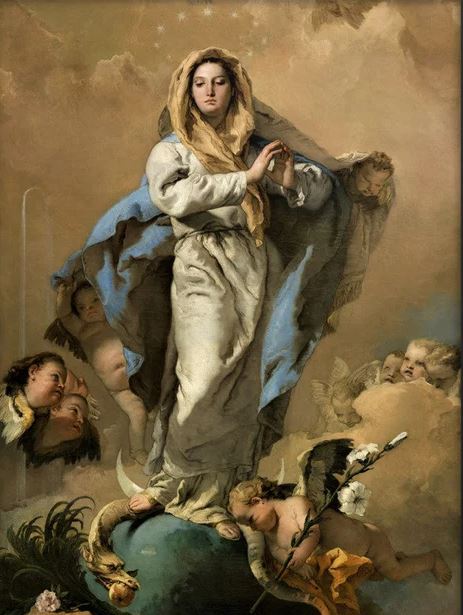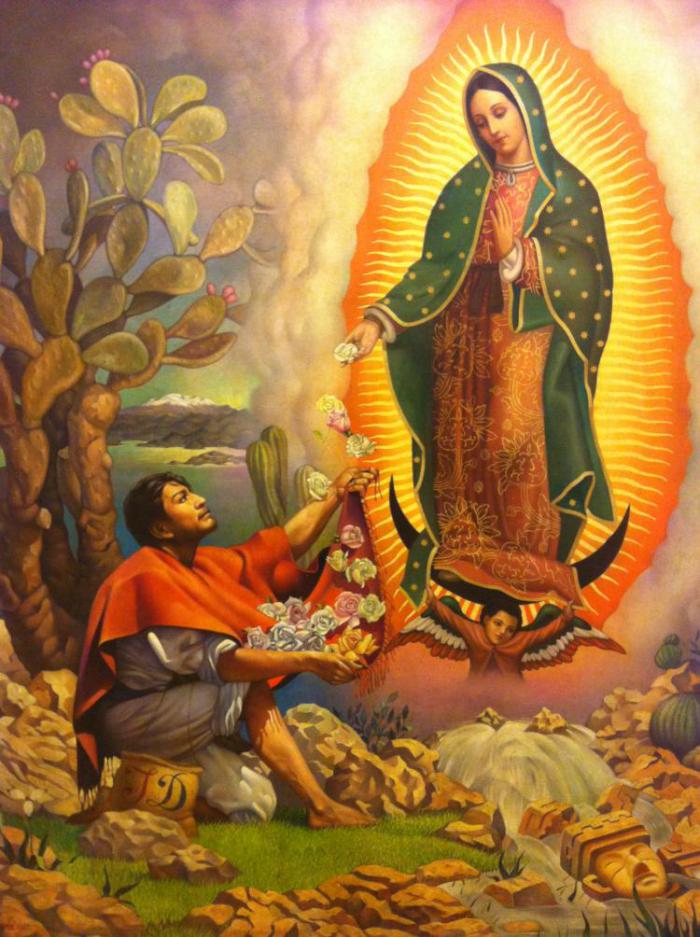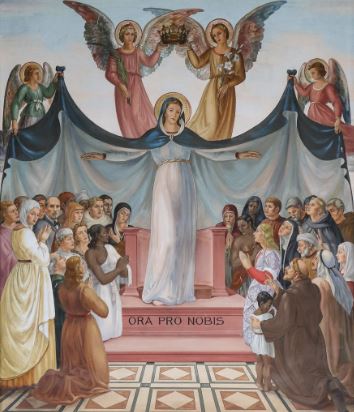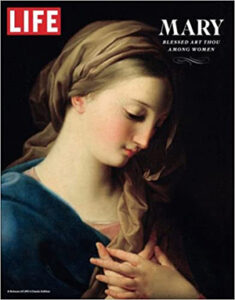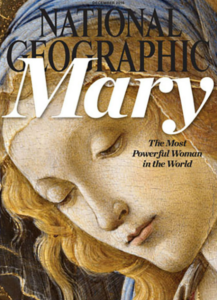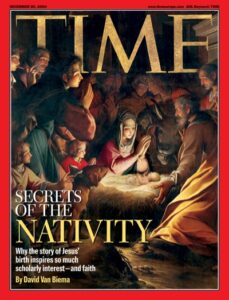It's very simple: Mary points us to Jesus!
Jesus loved and honored his mother, and so we, too, love and honor her.
Mary embraces God’s will and freely chooses to cooperate with God’s grace, thereby fulfilling a crucial role in God’s plan of salvation. Throughout the centuries, the Church has turned to the Blessed Virgin in order to come closer to Christ. Many forms of piety toward the Mother of God developed that help bring us closer to her Son. In these devotions to Mary, “while the Mother is honored, the Son, through whom all things have their being and in whom it has pleased the Father that all fullness should dwell, is rightly known, loved and glorified and . . . all His commands are observed.” The Church honors her as the Mother of God, looks to her as a model of perfect discipleship, and asks for her prayers to God on our behalf.
We pray to Mary, but not in the same way we pray to God—and not to worship her as a god.
There are four dogmas stating Mary’s personal relationship with God and her role in human salvation.
In current Catholic usage, the term “dogma” means a divinely revealed truth, proclaimed as such by the infallible teaching authority of the Church, and hence binding on all the faithful without exception, now and forever.
Proclaiming the Queenship of Mary
From the earliest ages of the Catholic Church a Christian people, whether in time of triumph or more especially in time of crisis, has addressed prayers of petition and hymns of praise and veneration to the Queen of Heaven. And never has that hope wavered which they placed in the Mother of the Divine King, Jesus Christ; nor has that faith ever failed by which we are taught that Mary, the Virgin Mother of God, reigns with a mother’s solicitude over the entire world, just as she is crowned in heavenly blessedness with the glory of a Queen.
see Ad Caeli Reginam Proclaiming the Queenship of Mary Pope Pius XII – 1954
Mary on the Calendar
The Month of Mary is May.
Saturday’s are dedicated to Our Lady.
The Month of the Rosary is October.
The First Saturday of each Month is also dedicated to Marian Devotions.
Marian Art
Jesus’ mother Mary has inspired more art and music than any other woman in history. Even in the modern age she fascinates the imaginations of men and women of all faiths. In fact, Mary has appeared on the cover of Time, Life, Newsweek, National Geographic, The New York Times and countless other publications.
